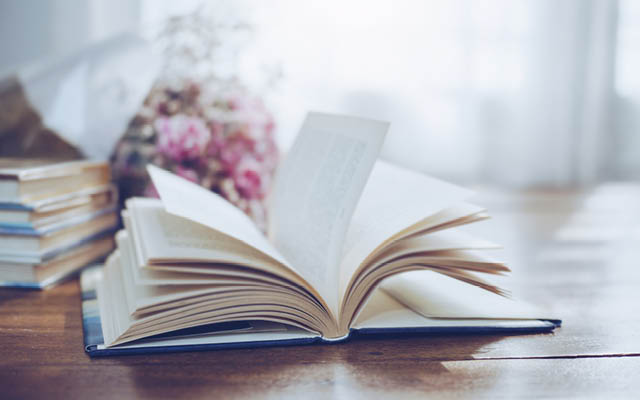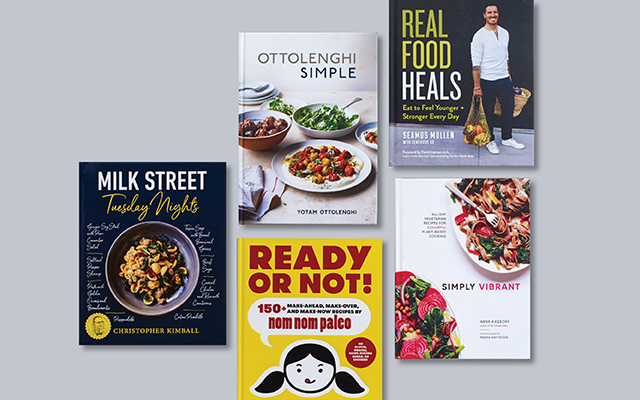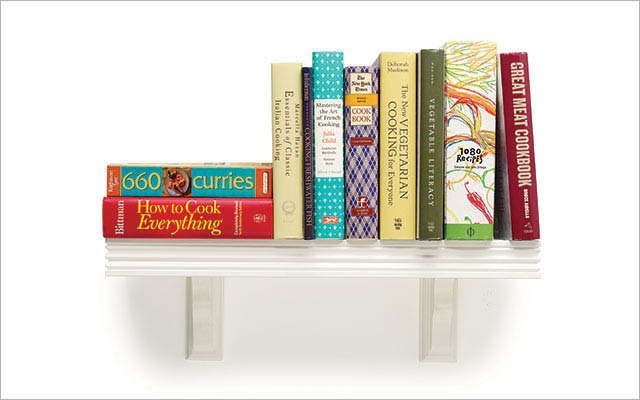Deaf Republic, by Ilya Kaminsky
Easily the best book of poetry I’ve read in years. My M.O. with poetry collections is to devour them and immediately loan them out to friends in order to spread the love, but I’ve kept this one on my coffee table since I bought it a few months ago — just in case I need to read it again, which I’m sure I will this summer (at least a few times). Set in the occupied city of Vasenka during wartime, it’s a narrative collection about silence, resistance, violence, and something like joy in the face of political unrest. It’s so, so good. You should read it. (Just not my copy.) —Kaelyn Riley, Senior Editor
Madame Fourcade’s Secret War: The Daring Young Woman Who Led France’s Largest Spy Network Against Hitler, by Lynne Olson
Stories about World War II have largely been about men, but thanks to a slew of recent books, we’re hearing for the first time about the amazing women spies who helped win the war.
The one I’m enjoying is Madame Fourcade’s Secret War: The Daring Young Woman Who Led France’s Largest Spy Network Against Hitler, Lynne Olson’s riveting biography of Marie-Madeleine Fourcade, the woman who ran Alliance, one of the largest resistance networks in Nazi-occupied France.
Olson tells the extraordinary tale of Fourcade — an elite French socialite who surprises everyone with her audacity, nerve, and inner resources as she took on the faces of evil.
She built a network of some 3,000 agents under her command, and orchestrated, along with Britain’s MI6, countless dangerous missions and clandestine acts against the Germans. The agents provided crucial intelligence on Nazis boats, submarine operations, and the development of the V-1 and V-2 rockets. One group provided a map of Nazi preparations prior to the Normandy invasion that helped make D-Day possible.
Unlike the fictional espionage novels I’ve been reading lately, this is a true, harrowing tale of bravery, spycraft, and the amateur spies who risked everything to save France. —Steve Waryan, Copy Chief
Priestdaddy: A Memoir, by Patricia Lockwood
But can priests be daddys? The answer is yes, if they were married before they joined the Catholic church, and so it was that poet Patricia Lockwood grew up with a father who gave communion on Sunday mornings and shredded guitar in his underwear on Sunday nights. Priestdaddy is a memoir, largely about a year where Lockwood and her spouse returned to live in her parents’ rectory because of financial troubles. It is at times murderously funny (see: priests on guitar) and at others deeply melancholic, as when she reflects on the range of mysterious ailments faced by nearly every member of their community, situated near a radioactive waste site in Missouri. Lockwood spares the reader a tidy ending and simply stops the book, a structure that isn’t for everyone, but for my part I left feeling lucky to have been a part of a world built by language like hers, even for a little while.—Courtney Helgoe, Features Editor
A Dog Named Beautiful: A Marine, A Dog, and a Long Road Trip Home, by Rob Kugler
A must-read for anyone who has ever loved — and lost — a dog. When his best friend, Bella the chocolate lab, was diagnosed with cancer, former Marine Rob Kugler packed up his pal and set out on an adventure. Their journey created a cross-country and online community, taught him to live each minute to its fullest, and helped Kugler find his way back to himself. —Heidi Wachter, Senior Editor
Under Enemy Colors, by S. Thomas Russell
It’s been said — perhaps by a cubicle-based literary critic somewhere — that Patrick O’Brian’s series of Napoleonic-era nautical adventures are to male readers what Jane Austen’s novels are to women. But what’s one to do when you’ve run aground and finished all 21 books (and re-watched the film Master and Commander yet again) and read C. S. Forester’s 11 Hornblower naval tales, the HMS Bounty saga, and the other usual suspects? S. Thomas Russell’s recent and ongoing series featuring Lt. Charles Hayden and a suitably colorful cast of crew members is ideal desert-isle reading. The writing — and vocabulary — is (almost) as stylish as O’Brian’s, the action scenes as powerfully described as Forester’s. And best yet, Russell’s dialogue and intricate, intertwined romance remind one of . . . Austen! —Michael Dregni, Deputy Editor
Almost Everything: Notes on Hope, by Anne Lamott
“I am stockpiling antibiotics for the Apocalypse, even as I await the blossoming of paperwhites on the windowsill in the kitchen.” This is the first line of the prelude of Anne Lamott’s Almost Everything, a book I love so dearly that I almost want this short review to be just excerpt after excerpt of its most brilliant moments. There are a lot. By Lamott’s account, this nonfiction book is representative of her effort to compile everything she’s learned in her life (or almost everything) to pass on to her grandson. Like all of her writing, it’s witty and insightful, part observation and part advice on how to, as the poet Wendell Berry once wrote, “Be joyful / though you have considered all the facts.” —Kaelyn Riley, Senior Editor
Good Talk: A Memoir in Conversation, by Mira Jacob
This graphic memoir examines — through snippets of dialogue between Mira Jacob and her family and friends, illustrations, and photographs — what it means to be American, and brown-in-America, today.
The book was thrust upon me by one of my best friends following one of our discussions about the vague, sometimes overwhelming fear I have that I am hated by the majority of people in this country. I am an immigrant (naturalized in 2010) who was born in a Socialist country (Sweden) to parents hailing from a villainized nation (Iran). Some days I feel my protection is that I exhibit as vaguely exotic — darkish hair, olive-ish skin, multilingual, hard-to-pronounce name — but no one can ever seem to guess where I’m from. I kind of blend in, being just white enough and speaking with no discernible accent, but not quite: I am “other,” but the qualities that some Americans might find truly despicable are hidden from view.
It’s a hard topic to broach with kindness, honesty, and humor — I, personally, have certainly failed to do so on numerous occasions. But in Good Talk, Jacob deftly manages to do just that. She digs into the murkiness of “other”-ness, recounting how she, as an Indian Christian whose parents emigrated to the United States, has navigated our strange world: grappling with how she is treated by employers, how to talk to her son about race and violence, and how to relate to in-laws whose conservative political leanings insinuate hatred.
Ultimately, it’s a hopeful autobiography that seeks out common ground — common ground that, no matter how deeply buried, can be uncovered if we care enough to try. —Maggie Fazeli Fard, Senior Editor
Horizon, by Barry Lopez
Don’t have time to travel around the world? Reading Barry Lopez’s epic travelogue will make you feel like you have. The National Book Award winner takes you on a tour of six regions of the world — from western Oregon to the Galápagos to Antarctica’s melting ice shelves. Along the way, he shares keen observations about humanity — what we’ve revered and what we’ve scarred — in a quest to answer the question: What will happen to us in a changing world? —Heidi Wachter, Senior Editor
Things I Want My Daughters to Know, by Elizabeth Noble
As is habit when we arrive in northern Minnesota for our family’s annual week at the lake, I raided my mother-in-law’s book collection about an hour after we unpacked. This is how I ended up reading Elizabeth Noble’s 2008 novel about loss, love, forgiveness, and moving forward.
Set in England, Noble writes the modern-day story of four sisters — Lisa, Jennifer, Amanda, and Hannah — who have lost their vibrant and outgoing mother, Barbara, too soon to cancer. The book opens on the morning of Barbara’s funeral and is told from the perspective of each daughter, as she receives and tries to process the letter and journal left behind by her mom, while navigating the unique challenges of her own life: Lisa’s resistance to committing to her long-time love; Jennifer’s failing marriage; Amanda’s penchant for wanderlust; and 15-year-old Hannah’s teenage urge to fit in while grieving deeply for her mom.
Noble weaves a realistic tale of the complicated nature of grief — how there’s no right or wrong way and how there’s no “moving on.” Over the course of the first year without Barbara, you witness the daughters’ ups and downs, their good days and bad; you feel the ache of their loss, as well as the love that binds them all despite their differences. And as they read their mother’s letters and discover and embrace the characteristics of her that live on within them, you begin to see them move forward, carrying the lessons from and legend of their mom right along with them.
Things I Want My Daughters to Know is a tear-jerker (at least for this reader), while also being funny and uplifting. It’s a good beach (or lake) read, decade-old or not.—Jamie Martin, Editor In Chief
I Like to Watch: Arguing My Way Through the TV Revolution, by Emily Nussbaum
I haven’t read this book yet, but I have read many of its essays in The New Yorker, where Nussbaum is the culture critic. She’s also easily (though less famously) my favorite follow on Twitter. In our age of peak TV, Emily Nussbaum is my North Star. What I love so much about her writing is how she seemingly effortlessly connects her musings on a particular show not just to the evolving genre of television in general, but to all of popular culture and how we relate to it. If nothing else, I’ll read the book to relive some of my favorite Nussbaum reviews of shows like Sex and the City and Jane the Virgin, the types of shows that she says “often get dismissed as fluff, which is how our culture regards art that makes women’s lives look like fun.” —Kaelyn Riley, Senior Editor
Late Migrations: A Natural History of Love and Loss, by Margaret Renkl
Sometimes books slip into our lives precisely when we need them most. As I begin to grapple with the death of my beloved grandmother this summer, that book is Late Migrations: A Natural History of Love and Loss, by Margaret Renkl.
Renkl’s collection of essays is simultaneously personal and universal. Striking in its lyrical narration and brutally honest depictions of the human experience, Renkl’s book weaves poignant observations of the natural world into an ode to those for whom she has cared and grieved. The effect is a brilliant juxtaposition of human grief and loss with rat snakes, bluebirds, butterflies.
Late Migrations, with Margaret Renkl’s reflections as well as her brother’s exquisite illustrations, shines warmly within my indescribable loss. “What we feel always contains its own truth,” Renkl writes, “but it is not the only truth, and darkness almost always harbors some bit of goodness tucked out of sight.” Renkl’s essays remind us of the grace in the mundane as well as the light that hides within all darknesses. It is a must-read. —Molly Tynjala, Editorial Intern
21 Lessons for the 21st Century, by Yuval Noah Harari
Historian Yuval Noah Harari has this really remarkable ability to present incredibly complex issues with total clarity. I’ve genuinely never been so impressed by a writer’s mind. His latest is divided into 21 chapters, exploring what Harari believes are 21 of today’s “greatest challenges” through a confluence of perspectives (historical, political, philosophical, scientific, and spiritual), all with an aim to answer the truly big questions about where our society is headed: What can we do about the fake news epidemic? How do we maintain personal liberty when Big Data is watching our every move? What’s the future of the workforce in an increasingly automated society? In some ways, this book is the antithesis of a typical “summer read” — it’s not particularly soothing or simple — and yet, I really couldn’t put it down. —Kaelyn Riley, Senior Editor
Girl, Stop Apologizing: A Shame-Free Plan for Embracing and Achieving Your Goals, by Rachel Hollis
Like many others, I found Rachel Hollis by way of her first nonfiction book, Girl, Wash Your Face. I was immediately drawn to both her message and her voice; she challenges women to live up to their full potential — who they were made to be — and speaks to you like a close girlfriend (but one who keeps it real, and offers no room for BS).
This summer, I’m diving into her follow-up book, Girl, Stop Apologizing. Her first book addressed the lies that often hold women back and cause us to feel overwhelmed or unworthy of more. The second is intended to build on that, and it’s divided into three sections: excuses to let go of, behaviors to adopt, and skills to acquire.
I’d recommend both books for those who struggle with defining themselves in light of others instead of owning who they are and what they want, or those who have dreams they want to go after but are afraid of imperfection or other people’s opinions. While her books give you a kick in the butt, you put them down feeling inspired, motivated, and like you’ve got a coach on your side. —Molly Schelper, Content Manager, LT Editorial
The Book of Joy: Lasting Happiness in a Changing World, by His Holiness theDalai Lama and Archbishop Desmond Tutu with Douglas Abrams
I picked up The Book of Joy recently not because I felt myself particularly lacking in that department, but because I felt there was a pretty good chance that Douglas Abrams’s chronicle of a weeklong series of conversation between His Holiness the Dalai Lama and Archbishop Desmond Tutu would yield some fresh insights into the challenges we all face in our pursuit of happiness. The trio generally delivers — especially for readers unfamiliar with the volumes of research that have emerged on the topic of happiness in recent years. Abrams manages to capture the feelings these two spiritual leaders have for each other, and he deftly leads the conversations into territory that demonstrates their shared approach to finding joy amid life’s many trials (hint: it’s all about compassion and selflessness). I can’t say the book yielded many epiphanies for me, but there was something reassuring to see two noble octogenarians from different religious traditions get along so well. —Craig Cox, Deputy Editor
On Trails: An Exploration, by Robert Moor
During a thru-hike of the Appalachian Trail, Robert Moor began wondering what lies beneath his feet. Part science, part memoir, Moor’s book brilliantly traces the footsteps of those — from the native Cherokee of the Southeastern United States to ants and elephants — who blazed the trail before him. He also notes the similarities between human pathways and our highways and the internet. —Heidi Wachter, Senior Editor
The Mars Room, by Rachel Kushner
Narrated mainly in flashbacks from the interior of a California women’s prison, The Mars Room is an exercise in unsentimental empathy. The main character, Romy, is a single mother who worked as a dancer in a strip club on San Francisco’s Market Street before receiving two life sentences for killing the man who stalked her. The story is told from multiple perspectives — Romy’s, her fellow inmates, her prison English teacher, even her stalker — and what emerges is a collage of histories that give life and breath and understanding to that particular crime. I will never look at a prison, or a prisoner, the same way again. Rachel Kushner is a titan. Read her. —Courtney Helgoe, Features Editor
The Crystal Goblet: Sixteen Essays on Typography, by Beatrice Warde
As a designer, I think this book about typography will be really interesting. I’ve always been interested in fonts and am curious to find out what this book has to say about them! —Jennifer Jacobson, Associate Art Director
City of Girls, by Elizabeth Gilbert
This story about a young woman living in an off-Broadway theater run by her bohemian auntie in 1940 is nothing short of confectionary. Sex (plenty), wit (endless), and perfectly paced scenes are compelling enough to make you think you’re just having a delightful summer read, but Gilbert’s sly mastery makes this a deeply feminist book that only looks like a lightweight.—Courtney Helgoe, Features Editor
Ayesha At Last, by Uzma Jalaluddin
My summertime favorites often include the same classic novels I’ve read again and again. Authors like the Bronte sisters and Jane Austen have a vision of young love, long summer walks, and exquisite evening parties that feels appropriate while basking in the sun or on an afternoon picnic. Yet in an era filled with significant social movements, I feel empowered to read romantic novels with more modern ideas on marriage, sex, and power. I recently picked up Ayesha At Last by Canadian author Uzma Jalaluddin. Jalaluddin gives Pride and Prejudice an endearing update as she unfolds a love story between a contemporary Elizabeth and a conservative Muslim man. Reviews say this must-read is full of humor, romance, and a healthy dose of reality — a perfect beach read for me! —Tatyana McNamara, Digital-Content Specialist/Social-Media Editor
What Is to be Done?, by Leo Tolstoy
Russian literature of all types has always appealed to my fatalistic side, but Leo Tolstoy’s meandering 1887 political treatise, What Is to Be Done?, left me wondering whether the old count might’ve been better off sticking to fiction. Between painting poignant scenes of derelict Muscovites, he ruminates on the meaning of money, the value of labor, the guilt of the upper classes, the moral benefits of rural life, and numerous other philosophical conundrums. I suspect his didactic approach found an appreciative audience among aspiring revolutionists of his time, but this old anarchist found it all to be pretty tough sledding. At least I came away with a clear answer to the question Tolstoy poses in the title: Reach for something by Dostoyevsky. —Craig Cox, Deputy Editor
Disrupt Aging: A Bold New Path to Living Your Best Life at Every Age, by Jo Ann Jenkins
Jo Ann Jenkins begins this book with a memory of her 50th birthday. Each card she opened contained a phrase mocking her age; however, she didn’t feel old. She was motivated by that experience, deciding not to let age define who she is. At age 52, she switched career paths and eventually become CEO of AARP. Through her work at AARP, she realized that older generations still have a desire to explore new opportunities, and those opportunities can be different for each of us.
“We no longer live our lives in a linear progression from education to work to retirement,” Jenkin notes. “We move in and out of these phases throughout our lives.” It’s up to each of us to choose how we want to live as we grow older.
She tells stories of the journeys of individual people who have overcome the stereotypes of what it means to grow older. Each of these journeys reminds us that age is just a number, and we can do whatever we set our minds to, at any age. Finding purpose and fulfillment in our lives constantly changes and shifts as we learn, grow, and evolve as humans. To aid in this endeavor, she notes that we must also take care of our health so that we can support our dreams and ambitions. We must exercise both physically as well as mentally, and make healthy choices every day. She also adds that we should create social institutions and public policies that support us throughout our lives.
“As we disrupt aging, we’re challenging the outdated beliefs and stereotypes about what it means to grow older and sparking new solutions so more people can choose how they want to age,” notes Jenkins. Disrupting aging, she says, is about questioning policies and asking how we can make adjustments to serve our communities, no matter which generations make up these communities. It’s about rethinking what it means to grow older, and how to create the life you want to live at any age.—Jennifer Jacobson, Associate Art Director




This Post Has 0 Comments